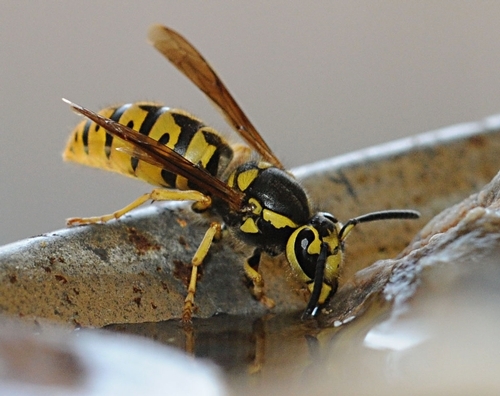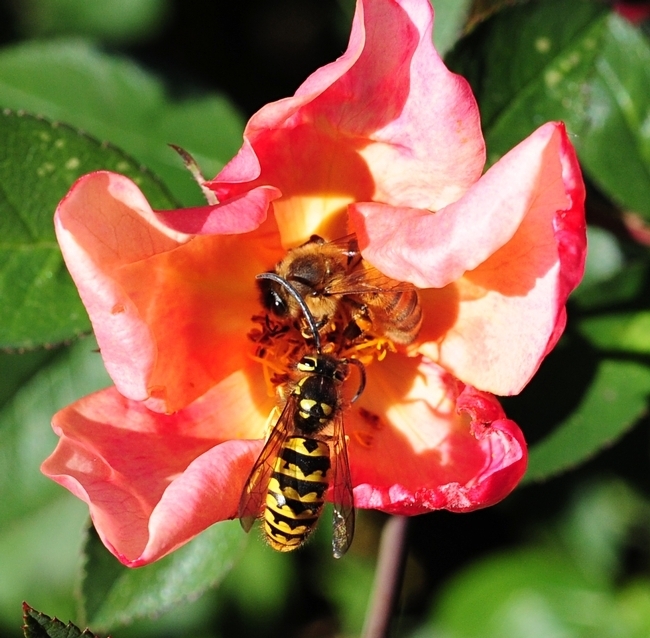
Yellowjackets, commonly known as "meat bees," in comparison to the "vegetarian" honey bees, will be among the wasps featured at the Bohart Museum of Entomology's open house from 1 to 4 p.m., Sunday, Sept. 25 in Room 1124 of the Academic Surge Building, 455 Crocker Lane, UC Davis campus. The theme: "Weird and Wonderful Wasps."
The open house is free and family friendly. A family arts and crafts activity is also planned.
"Yellowjackets are social wasps that build large, hidden nests," writes Lynn Kimsey, director of the Bohart Museum and a UC Davis distinguished professor of entomology, on one of her online fact sheets. "The nests are usually subterranean in rodent burrows or in cavities in trees, walls or attics.
"Yellow jacket nests can be huge with 50,000 to 100,000 workers," Kimsey points out. "In temperate climates these colonies are annual. Their nests die in the fall after producing new queens. New queens produced by the colonies in the fall spend the winter in protected places until spring when they found new colonies. Yellow jacket colonies can become perennial in warmer climates, such as in Hawaii and coastal California. In these situations the nests can become enormous, with millions of workers!"
Kimsey says that yellowjacket nests "can be distinguished from paper wasp nests because the brood cells are encased in a paper envelope so they can't be seen without taking off the outer envelope. These wasps generally feed on live prey, but the pest species, such as Vespula pensylvanica, will scavenge other sources of meat and sugar, including sodas, hamburgers and road kill. They will also visit aphids and scale insects for honeydew."
At the open house, visitors will learn about the smallest fairy wasps to the "murder hornets"; what role wasps play in plant galls and figs; and how to distinguish a parasitoid from a parasite. Kimsey will discuss the Asian giant hornet, Vespa mandarinia. A single colony of the Asian giant hornet was found and destroyed Sept. 18, 2019 in Nanaimo, Vancouver Island, Canada, and a single dead hornet was found Dec. 8, 2019 in nearby Blaine, Wash. Since then, it also has been sighted-- and destroyed--in both Canada and Washington state.
Fairy wasps, in the family of chalcidoid wasps, are tiny insects. They include the world's smallest known insect, with a body length of only 0.139 mm (0.0055 in), and the smallest known flying insect, only 0.15 mm (0.0059 in) long, according to Wikipedia. The fairy wasps are found in temperate and tropical regions throughout the world. The family contains approximately 100 genera with 1400 species. All known fairy wasps are parasitoids of the eggs of other insects, Wikipedia says, "and several species have been successfully used as biological pest control agents."
(See Bug Squad blog on European paper wasps and Bohart Museum Fact Sheet comparing yellowjackets to European paper wasps.)
Attached Images:
